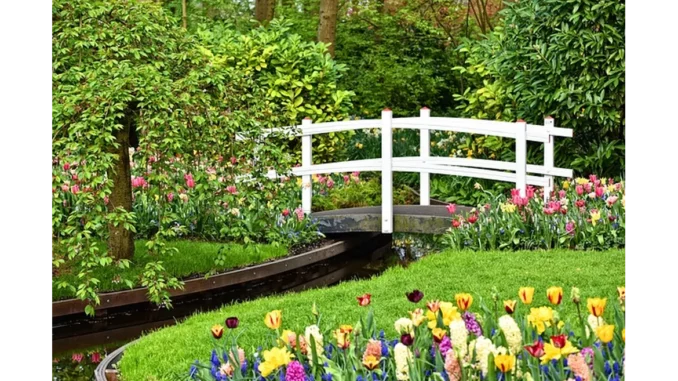
When you think of a Cotswold garden, images of honey-coloured stone walls, lush greenery, and timeless elegance come to mind. But what truly sets these gardens apart is the balance between formal structure and natural beauty. I recently had the pleasure of sitting down with Emily Carter, a seasoned landscape designer with a particular flair for creating classic Cotswold gardens. Our conversation centred around the art of designing knot gardens, a quintessential element of formal garden design that brings a touch of precision and symmetry to any outdoor space.
Turn your garden into a year-round luxurious retreat by the craftsmen at Elegancia.homes.
Emily’s journey into the world of garden design started at a young age. “I’ve always been fascinated by the way gardens can transform a space, creating a sanctuary of beauty and calm,” she shared. Her passion led her to specialise in Cotswold gardens, where she found endless inspiration in the region’s rich history and natural charm.
“Knot gardens are all about precision and symmetry,” Emily explained. “They consist of neatly clipped hedges that form intricate patterns, creating a tapestry of greenery that’s both elegant and timeless.” She went on to describe how these gardens originated in the Tudor period, where they were a symbol of wealth and sophistication. Today, they still carry that air of formality and grace, making them a perfect addition to any garden looking to evoke a classic English style.
One of the key elements in designing a knot garden is choosing the right plants. “You want plants that can be easily shaped and maintained,” Emily advised. “Boxwood (Buxus sempervirens) is a popular choice because it grows densely and can be clipped into precise shapes. However, you can also use other plants like rosemary or lavender for a slightly different texture and scent.”
As we walked through one of her recent projects, Emily pointed out the importance of symmetry and balance in creating a successful knot garden. “Each side of the garden should mirror the other, creating a sense of harmony and order,” she said. This symmetry is achieved by carefully planning the layout and ensuring that each element is perfectly aligned.
While the formal structure of a knot garden might seem rigid, Emily emphasised the need for balance. “In the Cotswolds, we often combine formal elements with more relaxed, natural planting styles. This creates a beautiful contrast and ensures that the garden doesn’t feel too stiff or artificial.” She illustrated this by showing me a section of the garden where the neat hedges of the knot garden were complemented by flowing borders of roses, lavender, and foxgloves, adding a touch of softness and colour to the design.
Emily also shared some practical tips for maintaining a knot garden. “Regular clipping is essential to keep the hedges looking neat and tidy. I recommend trimming them at least twice a year, in late spring and early autumn.” She also stressed the importance of using quality tools. “Sharp shears and pruners make a big difference in achieving clean, precise cuts.”
When it comes to the overall design, Emily suggested starting with a simple pattern, especially if you’re new to knot gardens. “A basic geometric design can be just as effective and beautiful as a more complex one. Once you’re comfortable with the basics, you can experiment with more intricate patterns.”
For those with smaller gardens, Emily had some encouraging words. “You don’t need a large space to create a knot garden. Even a small courtyard can be transformed with a carefully designed pattern of clipped hedges. The key is to make the most of the space you have, using vertical elements like climbing plants to add height and interest.”
As our conversation came to a close, Emily reflected on the timeless appeal of knot gardens. “There’s something incredibly satisfying about the order and precision of a well-designed knot garden. It brings a sense of calm and elegance to any space, inviting you to pause and appreciate the beauty of nature.”
In designing your own Cotswold-inspired garden, incorporating a knot garden can bring a touch of formal elegance and historical charm. By following Emily’s expert tips and embracing the principles of symmetry and balance, you can create a garden that is not only beautiful but also a true reflection of the timeless grace of the Cotswolds.
With Emily Carter’s insights and guidance, creating a classic Cotswold garden with a stunning knot garden at its heart is within reach. Whether you have a sprawling estate or a cosy courtyard, the principles of precision, symmetry, and balance will help you bring a piece of the Cotswolds’ natural beauty into your own space.
Lewis


Be the first to comment